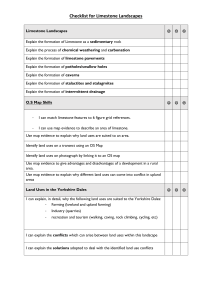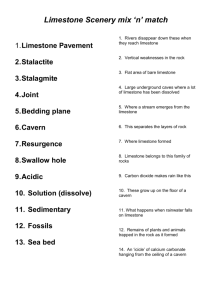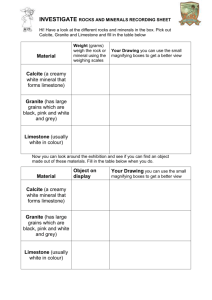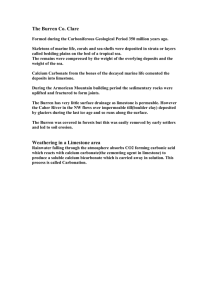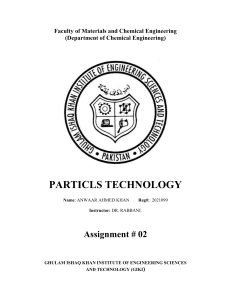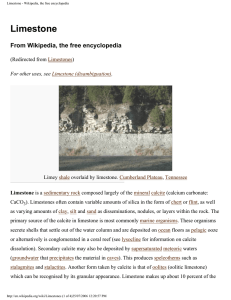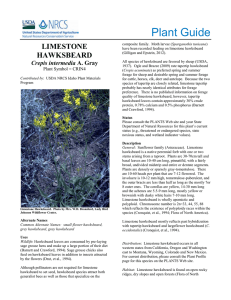Building materials from recycled limestone and concrete waste T
advertisement
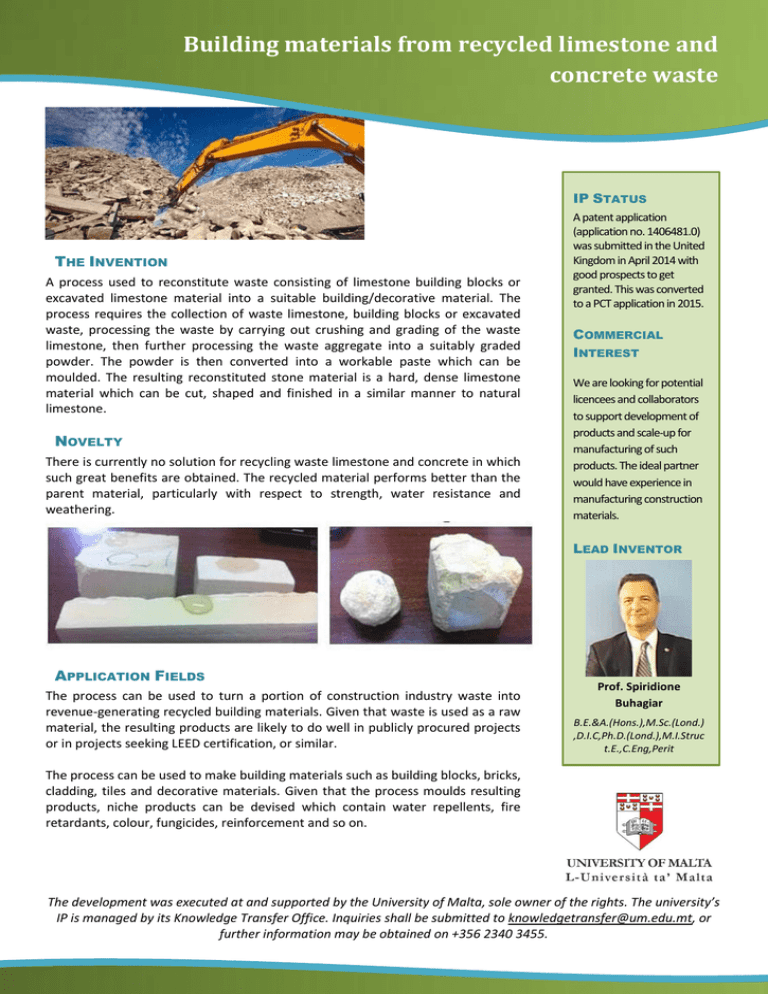
Building materials from recycled limestone and concrete waste IP STATUS THE INVENTION A process used to reconstitute waste consisting of limestone building blocks or excavated limestone material into a suitable building/decorative material. The process requires the collection of waste limestone, building blocks or excavated waste, processing the waste by carrying out crushing and grading of the waste limestone, then further processing the waste aggregate into a suitably graded powder. The powder is then converted into a workable paste which can be moulded. The resulting reconstituted stone material is a hard, dense limestone material which can be cut, shaped and finished in a similar manner to natural limestone. NOVELTY There is currently no solution for recycling waste limestone and concrete in which such great benefits are obtained. The recycled material performs better than the parent material, particularly with respect to strength, water resistance and weathering. A patent application (application no. 1406481.0) was submitted in the United Kingdom in April 2014 with good prospects to get granted. This was converted to a PCT application in 2015. COMMERCIAL INTEREST We are looking for potential licencees and collaborators to support development of products and scale-up for manufacturing of such products. The ideal partner would have experience in manufacturing construction materials. LEAD INVENTOR APPLICATION FIELDS The process can be used to turn a portion of construction industry waste into revenue-generating recycled building materials. Given that waste is used as a raw material, the resulting products are likely to do well in publicly procured projects or in projects seeking LEED certification, or similar. Prof. Spiridione Buhagiar B.E.&A.(Hons.),M.Sc.(Lond.) ,D.I.C,Ph.D.(Lond.),M.I.Struc t.E.,C.Eng,Perit The process can be used to make building materials such as building blocks, bricks, cladding, tiles and decorative materials. Given that the process moulds resulting products, niche products can be devised which contain water repellents, fire retardants, colour, fungicides, reinforcement and so on. The development was executed at and supported by the University of Malta, sole owner of the rights. The university’s IP is managed by its Knowledge Transfer Office. Inquiries shall be submitted to knowledgetransfer@um.edu.mt, or further information may be obtained on +356 2340 3455.

